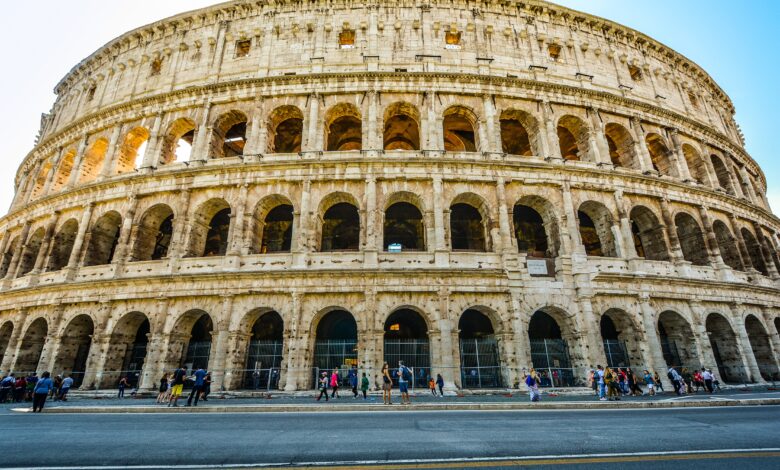Architectural Legacies: 5 Ancient Stadiums That Shaped Modern Arenas

Ancient Greek and Roman stadiums were not merely places for athletic competitions; they were architectural wonders that left a lasting impact on the design of future stadiums. From the 1900s to the 1920s, the construction of monumental stadiums on college campuses in the United States saw a direct influence from these ancient structures’ grandeur and engineering feats. Let’s explore five great ancient stadiums and their enduring influences on modern arenas.
Amphitheater of Pompeii
The Amphitheater of Pompeii, with its preserved glory, served as a stage for thrilling gladiator matches and other spectacles. Its distinctive trapezoid staircases, supported by arches, added to its architectural marvel. This extraordinary design left a lasting impact on the construction of the Yale Bowl in 1914. The Yale Bowl, with its giant earthen oval and seating built into the surrounding hills, sought to recreate the immersive atmosphere of the ancient amphitheater. By drawing inspiration from Pompeii, the Yale Bowl embraced the grandeur and historical significance of ancient stadiums, becoming a testament to the enduring influence of these remarkable structures.
Roman Colosseum
The Roman Colosseum, situated at the heart of ancient Rome, captivated audiences with its grandeur and architectural ingenuity. Its efficient crowd management system, featuring multiple vomitoria for easy access, revolutionized how stadiums accommodated large gatherings. The Colosseum’s opulent features, including hidden perfumed mists, added an extra layer of luxury to the spectator experience. Drawing inspiration from this iconic structure, the Ohio Stadium, which opened in 1922, replicated elements such as the sweeping upper deck and the majestic coffered semi-dome entrance. These design choices aimed to evoke the grandeur and historical significance of the Roman Colosseum, further solidifying its influence on future stadium construction.
Stadium of Delphi
Situated amidst the mystical surroundings of Delphi, the Stadium of Delphi played host to thrilling footraces during the Pythian Games. Its remarkable seating arrangement set this stadium apart, featuring 12 rows of seats and dedicated sections for dignitaries. This distinctive design inspired Stanford University’s stadium, which was constructed in 1921. Stanford’s architects sought to capture the essence of Delphi by creating an earthen bowl-shaped stadium. They further emulated Delphi’s design by breaking up a section of the bowl to accommodate a long track straightaway. The result was a stadium that paid homage to the ancient Greek venue and provided spectators with a unique and immersive viewing experience.
Circus Maximus
The grandeur of the ancient Roman Circus Maximus, with its thrilling chariot races and impressive Spina, left an indelible mark on stadium design. Harvard University, recognizing the magnificence of the Roman circus, sought to replicate its splendor with the construction of a concrete stadium in 1903. Harvard’s stadium, with its resemblance to the ancient circus, quickly became the largest collegiate stadium of its time. Its influence reverberated nationwide, inspiring a surge of stadium construction during the 1920s. The Roman circus served as a powerful symbol of spectacle and competition, and its enduring legacy can be seen in the iconic stadiums that grace college campuses today.
Panathenaic Stadium
The Panathenaic Stadium in Athens stood as a testament to the architectural brilliance of ancient Greece. Constructed entirely of marble, it became the prestigious venue for the Stadion footrace, the oldest recorded event in the Olympic Games. When Harvard University began building its stadium, it intentionally mirrored the footprint and track length of the Panathenaic Stadium. This deliberate homage honored the ancient Greek masterpiece and forged a connection between college football and the rich legacy of athletic competitions that spanned centuries. The influence of the Panathenaic Stadium can be seen in the design choices of Harvard’s stadium, preserving the spirit of ancient athletic excellence and creating a sense of continuity between the past and the present.
These great ancient stadiums continue to captivate our imagination and influence modern arena design. They showcase the ingenuity and creativity of ancient civilizations and remind us of the enduring power of sports and communal gatherings. The echoes of these ancient structures can be seen in the stadiums that host our favorite sporting events today, preserving a rich architectural heritage that spans centuries.